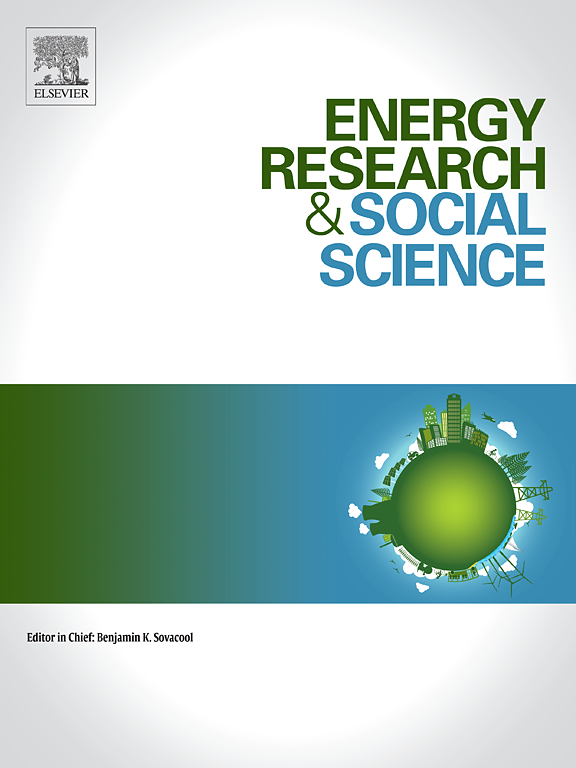Navigating French post-nuclear trajectories: lessons from Fessenheim's redevelopment pathways
IF 6.9
2区 经济学
Q1 ENVIRONMENTAL STUDIES
引用次数: 0
Abstract
As with any industry, nuclear installations have a limited lifespan. This is generally around forty years, although there is debate about the possibility of extending the operation of the reactors. In any case, such facilities are bound to shut down eventually. They will have to be dismantled, and their territory redeveloped. However, little attention has been paid to the issues of dismantling and the future use of these sites. The aim of this article is to develop an analytical framework to answer the following questions: What factors influence the redevelopment trajectories of post-nuclear sites? And how do they interact? We consider three redevelopment possibilities: brownfield, greenfield and multi-scale redevelopment. This latter category includes the redevelopment of a post-nuclear territory on a site larger than the original power plant site. Our analytical framework is based on the concept of trajectory. We consider that the choice of redevelopment, which we call spatial configuration, depends on a number of factors, perceived as strategic resources by different actors, and related to each other over a period of time. To illustrate this, we apply our analytical framework to the redevelopment of the Fessenheim nuclear power plant in France. Its application has enabled us to make our framework more flexible to adapt it to local specificities. However, the analysis of the redevelopment trajectories of nuclear power plants with fundamentally different characteristics is essential to better understand the interrelationships that lead to the choice of a particular type of redevelopment.
导航法国后核发展轨迹:从费森海姆重建路径的经验教训
与任何工业一样,核设施的使用寿命有限。这通常是在40年左右,尽管对延长反应堆运行的可能性存在争议。无论如何,这些设施最终注定要关闭。他们将不得不被拆除,他们的领土将被重新开发。但是,很少注意拆除这些场址和今后利用这些场址的问题。本文的目的是建立一个分析框架来回答以下问题:什么因素影响后核场所的再开发轨迹?它们是如何相互作用的?我们考虑了三种重建可能性:棕地、绿地和多尺度重建。后一类包括在比原发电厂更大的场地上重建核后领土。我们的分析框架是基于轨迹的概念。我们认为,重新开发的选择,我们称之为空间配置,取决于许多因素,被不同的参与者视为战略资源,并在一段时间内相互关联。为了说明这一点,我们将我们的分析框架应用于法国费森海姆核电站的重建。它的应用使我们能够使我们的框架更加灵活,以适应当地的具体情况。然而,分析具有根本不同特征的核电站的重建轨迹对于更好地理解导致选择特定类型的重建的相互关系是必不可少的。
本文章由计算机程序翻译,如有差异,请以英文原文为准。
求助全文
约1分钟内获得全文
求助全文
来源期刊

Energy Research & Social Science
ENVIRONMENTAL STUDIES-
CiteScore
14.00
自引率
16.40%
发文量
441
审稿时长
55 days
期刊介绍:
Energy Research & Social Science (ERSS) is a peer-reviewed international journal that publishes original research and review articles examining the relationship between energy systems and society. ERSS covers a range of topics revolving around the intersection of energy technologies, fuels, and resources on one side and social processes and influences - including communities of energy users, people affected by energy production, social institutions, customs, traditions, behaviors, and policies - on the other. Put another way, ERSS investigates the social system surrounding energy technology and hardware. ERSS is relevant for energy practitioners, researchers interested in the social aspects of energy production or use, and policymakers.
Energy Research & Social Science (ERSS) provides an interdisciplinary forum to discuss how social and technical issues related to energy production and consumption interact. Energy production, distribution, and consumption all have both technical and human components, and the latter involves the human causes and consequences of energy-related activities and processes as well as social structures that shape how people interact with energy systems. Energy analysis, therefore, needs to look beyond the dimensions of technology and economics to include these social and human elements.
 求助内容:
求助内容: 应助结果提醒方式:
应助结果提醒方式:


